BBL Recovery Resources

BBL Recovery Resources
- #bbl booty pillow
- #bbl butt pillow
- #BBL driving pillow
- #bbl pillow for car
- #bbl pillow for plane
- #bbl pillow for work
- #bbl pillow near me
- #bbl pillow on plane
- #bbl pillow with wave
- #bbl pillows for work
- #bbl pillows near me
- #bbl pillowsfor work
- #BBL recovery guide
- #Best BBL pillow for airplane
- #Best BBL pillow for car
- #Best BBL pillow for plane
- #Best BBL pillow for sitting
- #Best BBL pillow for work
- #BL pillow for airplane
- #Bombshell Booty bbl Pillow
- #Bombshell Booty Pillow
- #butt shaped bbl pillow
- #butt shaped pillow
- #Don't let your BBL results flatten. Discover the best BBL pillow for sitting and air travel. Learn why medical-grade suspension is the only way to ensure 100% fat graft survival and maintain your Ogee curves post-surgery
- #dr recommended bbl pillow
- #fat graft survival
- #Ogee recovery protocol
- #patented bbl pillows
- #top rated bbl pillow
- #top rated bbl pillow bombshell booty pillow
- #top rated bbl pillows
- #top rated bombshell bbl pillow
- #top rated bombshell bbl pillows

BBL Recovery Resources
Lo que necesita saber sobre el Levantamiento de Glúteos Brasileño (BBL)
- #"bbl Pillows" Blowout Sale
- ##1 BBL PILLOW
- #almohada para bbl
- #bbl booty pillow
- #bbl butt pillow
- #bbl driving pillow
- #bbl kit
- #bbl pillow
- #bbl pillow for car
- #bbl pillow for driving
- #bbl pillow for plus size
- #bbl pillow near me
- #bbl pillow set
- #bbl pillow vs donut pillow
- #bbl pillow with wave
- #bbl pillows
- #bbl pillows near me
- #bbl recovery pillow
- #bbl recovery pillow kit
- #best bbl pillow
- #best bbl pillow 2025
- #best bbl pillow bombshell booty pillow
- #best bbl pillow for car
- #best bbl pillow with back support
- #best bbl pillow with patent
- #best bbl pillows
- #bombshell bbl pillow reviews
- #bombshell patented bbl pillow
- #butt shaped pillow
- #cojin bbl
- #cojín para bbl
- #cómo sentarse después de un bbl
- #cuidados postoperatorios bbl
- #doctor recommended bbl pillows
- #dr recommended bbl pillow
- #fajas post bbl
- #firm vs soft bbl pillows
- #kit de recuperación bbl
- #levantamiento de glúteos brasileño
- #Levantamiento de Glúteos Brasileño (BBL)
- #patented bbl pillow bombshell
- #portable bbl pillow comparison
- #rated best bbl pillow for 2026
- #recuperación bbl
- #supervivencia de grasa bbl.
- #top rated bbl pillow bombshell booty pillow
- #top rated bbl recovery pillows
- #top rated best bbl pillow for 2026

BBL Recovery Resources
Qué marcas de cojines y almohadas son las más valoradas para cirugías de glúteos?
- #Almohada brasileña de levantamiento de glúteos después de la cirugía
- #almohada de recuperación BBL
- #almohada de recuperación BBL California
- #almohada de recuperación BBL Georgia
- #almohada de recuperación BBL Illinois
- #almohada de recuperación BBL Nevada
- #almohada para glúteos
- #almohada para glúteos cerca de mi
- #almohada para glúteos post bbl
- #bbl booty
- #bbl driving pillow
- #bbl kit
- #bbl pillow for car
- #bbl pillow for plane
- #bbl pillow near me
- #bbl pillows for plane
- #bbl pillows near me
- #bombshell booty bbl pillow
- #bombshell booty pillow bbl pillow
- #bootylicious bbl pillow
- #brazlian buttock lift pillow
- #butt shaped pillow
- #happy booty bbl pillow
- #pillow for bbl
- #pillows for bbl
- #Qué marcas de cojines y almohadas son las más valoradas para cirugías de glúteos?
- #recuperación BBL
- #yesindeed bbl pillow

BBL Recovery Resources
Cojín BBL con 4 Patentes, Guía de Almohadas para Cirugía de Glúteos
- #Almohada BBL
- #almohada BBL alta densidad
- #almohada bbl cerca de mi
- #almohada BBL con patente
- #Almohada brasileña de levantamiento de glúteos después de la cirugia
- #bbl booty
- #bbl pillow near me
- #bbl pillows near me
- #beneficios de usar faja
- #butt shaped pillow
- #cirugia bbl
- #cirugía de glúteos
- #cojin bbl cerca de mi
- #Cojín BBL con 4 Patentes
- #Cojín Bbl Para Glúteos
- #cojín para sentarse después de BBL
- #faja postquirúrgica
- #lipo espumas
- #lipo foam boards
- #lipotransferencia de glúteos
- #Mejor Cojín Bbl Para Glúteos
- #mejor cojín para BBL
- #necrosis grasa
- #recuperación BBL
- #shaper male
- #supervivencia injerto de grasa
- #tiempo de recuperación BBL

BBL Recovery Resources
Bombshell Booty Pillow: The Only BBL Pillow with 4 Patents (A Complete Review)
- #2025 best bbl pillow for driving
- #2025 best bbl pillow for plane
- #2025 best bbl pillow for travel
- #2025 best bbl pillow for work
- #2025 best bbl pillow my booty pillow
- #2025 best bbl pillows
- #2025 What is the best BBL pillow for travel?
- #bbl booty
- #BBL cushion comparison
- #bbl driving pillow
- #BBL KIT
- #BBL PILLOW
- #bbl pillow contour md
- #bbl pillow for driving
- #bbl pillow for sitting
- #BBL PILLOW NEAR ME
- #BBL pillow review
- #BBL pillow with 4 patents
- #BBL PILLOWS
- #BBL PILLOWS NEAR ME
- #BBL post surgery supplies
- #BBL proportion and balance
- #BBL recovery
- #BBL RECOVERY KIT
- #BBL RECOVERY KITS
- #BBL recovery sitting position
- #bbl surgery
- #BBL wedge pillow
- #BEST BBL KIT
- #best BBL pillow
- #BEST BBL PILLOWS
- #best surgeon for bbl surgery
- #big ass brazilian
- #Bombshell Booty Pillow
- #Bombshell Booty Pillow bbl pillow
- #Bombshell Booty Pillow bbl pillows
- #Bombshell Booty Pillow best bbl pillow
- #bombshell booty pillow Where can I buy authentic bbl recovery products online?
- #BRAZILIAN BUTT LIFT booty PILLOW
- #BRAZILIAN BUTT LIFT PILLOW
- #BRAZILIAN BUTT LIFT PILLOWs
- #BRAZILIAN BUTTock LIFT PILLOW
- #butt shaped pillow
- #contour md bbl pillow
- #fat graft survival
- #happy Booty Pillow
- #happy Booty Pillows
- #high-density foam BBL pillow
- #my booty bbl pillow
- #my booty bbl pillowm
- #patented BBL pillow
- #pillow for bbl
- #post surgery sitting pillow
- #What are the benefits of using bombshell booty pillows patent design?
- #Where can I buy authentic bombshell compression products online?
- #Where can I buy authentic ContourMD compression products online?
- #why high density BBL pillow
- #yesindeed bbl pillow
- #zero compression BBL pillow

BBL Recovery Resources
Using a BBL Pillow on a Plane and Finding Relief for Buttock Pain
- #1 week post op bbl
- #10 weeks post op bbl what to expect
- #3 weeks post op bbl what to expect
- #4 weeks post bbl and it looks flat
- #4 weeks post op bbl
- #5 weeks post op bbl
- #5 weeks post op bbl what to expect
- #6 weeks post op bbl
- #6 weeks post op bbl what to expect
- #7 weeks post op bbl
- #7 weeks post op bbl what to expect
- #8 weeks post op bbl
- #8 weeks post op bbl what to expect
- #9 weeks post op bbl what to expect
- #bbl accessories
- #bbl after care
- #bbl aftercare
- #bbl aftercare list
- #bbl airplane
- #bbl and breast augmentation how to sleep
- #bbl and tummy tuck sleeping ideas
- #bbl butt pillow
- #bbl cushion
- #bbl driving pillow
- #bbl essentials
- #bbl flight
- #bbl flight home
- #bbl gone flat
- #bbl healing process
- #bbl healing stages
- #bbl healing stages pictures
- #bbl healing time
- #bbl kit
- #bbl pillow
- #bbl pillow after surgery
- #bbl pillow for airplane
- #bbl pillow for car
- #bbl pillow for plane
- #bbl pillow for sitting
- #bbl pillow for sleeping
- #bbl plane ride
- #bbl post op care kit
- #bbl post op supplies
- #bbl preparation list
- #bbl recovery
- #bbl recovery essentials
- #bbl recovery kit
- #bbl recovery pictures
- #bbl recovery pillow
- #bbl recovery supplies list
- #bbl recovery time
- #bbl recovery time back to work
- #bbl recovery timeline
- #bbl recovery tips
- #bbl recovery week by week
- #bbl results
- #bbl results week by week
- #bbl seat
- #bbl seat cushion
- #bbl sleep position
- #bbl sleeping hacks
- #bbl sleeping ideas
- #bbl stages
- #bbl supplies
- #bbl supply list
- #bbl surgery supply kit
- #bbl swelling
- #bbl swelling timeline
- #before and after bbl recovery
- #best bbl pillow
- #best bbl pillow for sitting
- #best bbl pillow for sleeping
- #best bbl recovery pillow
- #best butt cushion
- #best butt pillow
- #best coccyx cushion
- #best coccyx cushion for car
- #best coxis pillow
- #best cushion for tailbone pain
- #best orthopedic seat cushion for tailbone pain
- #best pillow for broken tailbone
- #best pillow for coccyx pain
- #best pillow for tailbone pain
- #best rated coccyx cushion
- #best seat cushion for coccyx pain
- #best seat cushion for tailbone pain
- #best tailbone cushion
- #big booty pillow
- #big butt pillow
- #booty pillow
- #booty pillow after surgery
- #booty shaped pillow
- #brazilian butt lift after
- #brazilian butt lift aftercare
- #brazilian butt lift airplane
- #brazilian butt lift flight
- #brazilian butt lift healing time
- #brazilian butt lift pillow
- #brazilian butt lift plane
- #brazilian butt lift post op
- #brazilian butt lift recovery
- #brazilian butt lift recovery time
- #brazilian butt lift supplies
- #brazilian buttock augmentation recovery
- #brazilian buttock lift how long does it last
- #brazilian buttock lift pillow
- #broken tailbone pillow
- #bum shaped pillow
- #butt cushion
- #butt pillow
- #butt shaped pillow
- #butt surgery recovery
- #buttock pillow
- #buttock support
- #buttress pillow
- #can i sleep on my back 4 weeks after bbl
- #chair cushion for tailbone pain
- #coccyx cushion reviews
- #coccyx support pillow
- #coxis pillow
- #coxis support pillow
- #cushion for sore bum
- #cushion for sore buttocks
- #cushion for tailbone pain
- #cushion for tailbone pain relief
- #do bbls go away
- #does a brazilian butt lift hurt
- #does bbl go away
- #donut pillow for bbl
- #driving after bbl
- #fat grafting buttocks recovery
- #fat transfer to the buttocks recovery
- #fly after bbl
- #good bbl results
- #how long after bbl can i drive
- #how long after bbl can i sit without pillow
- #how long do bbls take to heal
- #how long does a bbl take to heal
- #how long does a brazilian butt lift last
- #how long does it take to recover from a bbl
- #how long does it take to recover from brazilian buttlift
- #how long is a bbl recovery
- #how long to recover from bbl
- #how painful is a bbl
- #how painful is a brazilian butt lift
- #how to lay after bbl
- #how to sit on a plane after bbl
- #how to sit on bbl pillow on plane
- #how to sleep after a bbl
- #how to sleep after bbl and lipo
- #how to sleep after bbl and tummy tuck
- #lipo 360 bbl recovery time
- #lipo 360 supply list
- #lipo and bbl
- #lipo and butt lift
- #pillow for butt pain
- #pillow for buttock pain
- #pillow for tailbone pain
- #post bbl care
- #post bbl recovery
- #post brazilian butt lift
- #post op bbl
- #pressure relief pillow for buttocks
- #seat cushion for back pain
- #seat cushion for buttock pain
- #seat cushion for coccyx pain
- #seat cushion for tailbone pain
- #tailbone cushion
- #tailbone cushion for bed
- #tailbone cushion reviews
- #tailbone pillow
- #tailbone pillow for sitting
- #tailbone support pillows
- #tummy tuck and bbl
- #tummy tuck and bbl together recovery
- #when can i lay on my back after bbl
- #when can i sleep on my back after bbl
- #why does my bbl looks flat
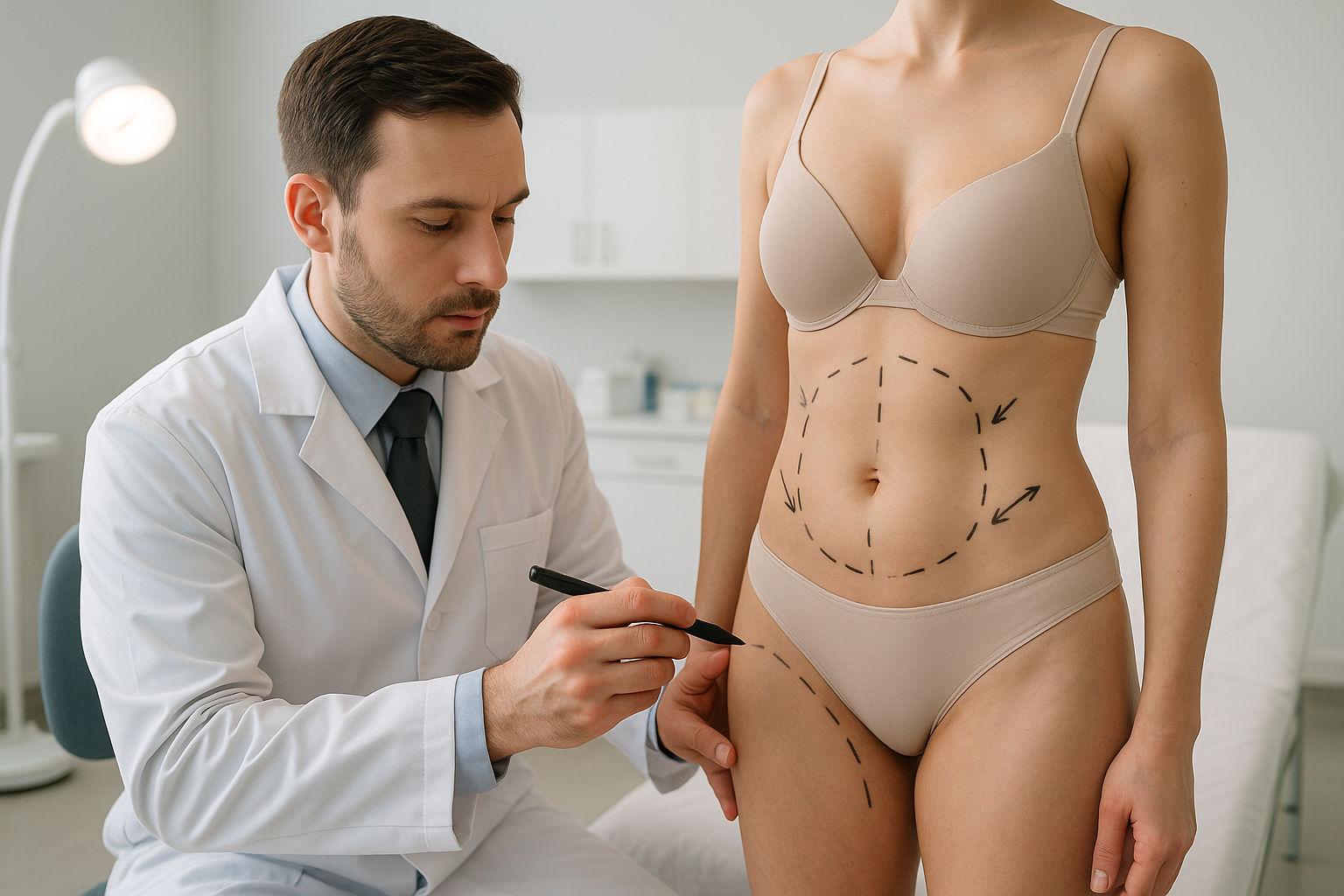
BBL Recovery Resources
What is a BBL and How Do You Recover?
- #abdominal binder after surgery
- #arnica arnica
- #arnica gel
- #arnicare arnica
- #arnicare gel
- #bbl ass
- #bbl body
- #bbl butt pillow
- #bbl cushion
- #bbl driving pillow
- #bbl flight
- #bbl flight home
- #bbl pillow
- #bbl pillow after surgery
- #bbl pillow for car
- #bbl pillow for plane
- #bbl pillow for sitting
- #bbl pillow for sleeping
- #bbl plane ride
- #bbl procedure
- #bbl recovery
- #bbl recovery pillow
- #bbl seat
- #bbl seat cushion
- #bbl shorts
- #bbls
- #best bbl pillow
- #best bbl pillow for sitting
- #best bbl pillow for sleeping
- #best bbl recovery pillow
- #best butt cushion
- #best butt pillow
- #best coccyx cushion
- #best coccyx cushion for car
- #best coxis pillow
- #best cushion for tailbone pain
- #best orthopedic seat cushion for tailbone pain
- #best pillow for broken tailbone
- #best pillow for coccyx pain
- #best pillow for tailbone pain
- #best rated coccyx cushion
- #best seat cushion for coccyx pain
- #best seat cushion for tailbone pain
- #best tailbone cushion
- #big booty pillow
- #big butt pillow
- #body shaper for men
- #body suit shapewear
- #bodysuit shapewear
- #boob binder
- #booty pillow
- #booty pillow after surgery
- #booty shaped pillow
- #bra & body
- #bra binding
- #bra compressor
- #brachioplasty scar
- #brassiere compression
- #brazilian booty surgery
- #brazilian but lift
- #brazilian butt
- #brazilian butt lift
- #brazilian butt lift airplane
- #brazilian butt lift flight
- #brazilian butt lift pillow
- #brazilian butt lift plane
- #brazilian butt lift surgery
- #brazilian buttock lift pillow
- #brazillian butt lift
- #breast binder
- #breast binding
- #breast reduction price
- #breast removal bras
- #broken tailbone pillow
- #bum shaped pillow
- #but augmentation
- #butt cushion
- #butt pillow
- #butt shaped pillow
- #buttock pillow
- #buttock support
- #buttress pillow
- #chair cushion for tailbone pain
- #coccyx cushion reviews
- #coccyx support pillow
- #colombian faja
- #colombian fajas
- #columbia faja
- #columbian faja
- #compression bra
- #compression bras
- #compression clothing
- #compression fitness
- #compression garment
- #compression garments
- #compression garments for apron belly
- #compression suit for women
- #cost of reduction mammoplasty
- #coxis pillow
- #coxis support pillow
- #curvy fajas
- #cushion for sore bum
- #cushion for sore buttocks
- #cushion for tailbone pain
- #cushion for tailbone pain relief
- #discount surgical
- #donut pillow for bbl
- #fahah waist trainer
- #fája
- #faja body shaper
- #faja meaning
- #faja postnatal
- #faja shapewear
- #faja waist trainer
- #fajas
- #fajas postnatal
- #fajas shapewear
- #fajas shapewear Group 2 (Keywords 51-100) how much does breast reduction cost
- #flexible back stretcher
- #fly after bbl
- #garments garments
- #garments size chart
- #gelscar
- #girdle
- #girdle for men
- #girdle girdle
- #girdle male
- #girdle panty girdle
- #girdles
- #girdles and panty girdles
- #Group 1 (Keywords 1-50) fája
- #gurdle
- #how much does a boob reduction cost
- #how much does a breast reduction cost
- #how much does reduction mammoplasty cost
- #how much is a boob reduction
- #how much is breast reduction surgery
- #how to sit on a plane after bbl
- #how to sit on bbl pillow on plane
- #keloid silicone sheet
- #lipo recovery
- #liposculpture recovery
- #men in girdles
- #panty girdle
- #pillow for butt pain
- #pillow for buttock pain
- #pillow for tailbone pain
- #post surgery compression bra
- #postpartum shapewear
- #pressure relief pillow for buttocks
- #seat cushion for back pain
- #seat cushion for buttock pain
- #seat cushion for coccyx pain
- #seat cushion for tailbone pain
- #silicone gel sheets for hypertrophic scars
- #snatched body
- #snatched plastic surgery
- #snatched waist meaning
- #stage 2 faja
- #strap chin
- #surgical bra
- #tailbone cushion
- #tailbone cushion for bed
- #tailbone cushion reviews
- #tailbone pillow
- #tailbone pillow for sitting
- #tailbone support pillows
- #the compression store
- #tummy control bodysuit
- #tummy tuck compression garment
- #urine funnel for females
- #what is a bbl surgery
- #what is bbl
- #what is brazilian butt
- #what is brazilian butt lift
- #whats a mommy makeover
- #whats bbl

BBL Recovery Resources
Can Sitting at Desk Job Ruin Your BBL Results
- #Almohada BBL
- #almohada BBL Amazon
- #almohada BBL Arizona
- #almohada BBL Atlanta
- #almohada BBL Bombshell
- #almohada BBL Boston
- #almohada BBL Bronx
- #almohada BBL Brooklyn
- #almohada BBL California
- #almohada BBL cerca de mí
- #almohada BBL cerca de mí Atlanta
- #almohada BBL cerca de mí Chicago
- #almohada BBL cerca de mí Dallas
- #almohada BBL cerca de mí El Paso
- #almohada BBL cerca de mí Florida
- #almohada BBL cerca de mí Houston
- #almohada BBL cerca de mí Las Vegas
- #almohada BBL cerca de mí Los Ángeles
- #almohada BBL cerca de mí Miami
- #almohada BBL cerca de mí Nueva York
- #almohada BBL Miami
- #almohada BBL Miami Beach
- #Am I a good candidate for a BBL?
- #amazon bbl driving pillow
- #ASS PILLOW
- #bbl butt pillow
- #bbl cushion
- #bbl driving pillow
- #bbl kit
- #bbl pillow
- #bbl pillow after surgery
- #bbl pillow alternatives
- #bbl pillow for car
- #bbl pillow for driving
- #bbl pillow for sitting
- #bbl pillow for sleeping
- #bbl pillows near me
- #bbl post surgery supplies
- #bbl recovery kitbbl pillow near me
- #bbl recovery pillow
- #bbl recovery supplies
- #bbl seat
- #bbl seat cushion
- #best bbl pillow
- #best bbl pillow for sitting
- #best bbl pillow for sleeping
- #best bbl recovery pillow
- #best butt cushion
- #best butt pillow
- #big booty pillow
- #big butt pillow
- #bl pillow reviews
- #booty pillow
- #booty pillow after surgery
- #booty pillow near me
- #booty shaped pillow
- #brazilian booty pillow
- #brazilian butt lift pillow
- #brazilian buttock lift pillow
- #bum pillow
- #bum shaped pillow
- #butt cushion
- #butt lift bbl surgery
- #butt pillow
- #butt shaped pillow
- #buttock pillow
- #buttock support
- #buttress pillow
- #Can you sit in a car after BBL surgery with a pillow?
- #cojin bbl
- #cojin para bbl
- #cojin post operatorio
- #cosmetic surgery
- #cushion for sore bum
- #cushion for sore buttocks
- #donut pillow for bbl
- #How do you sleep with a BBL pillow?
- #How long do you have to use a BBL pillow?
- #How much does a BBL cost?
- #How to sit after BBL surgery?
- #liposuction recovery supplies
- #pillow for butt augmentation
- #pillow for butt pain
- #pillow for buttock pain
- #plastic surgery
- #post bbl recovery
- #pressure relief pillow for buttocks
- #seat cushion for back pain
- #seat cushion for buttock pain
- #What are the risks of BBL surgery?
- #What is a BBL pillow?
- #What is a Brazilian butt lift?
- #What is a skinny BBL?
- #What is the best BBL pillow?
- #What is the difference between a BBL and butt implants?
- #What kind of anesthesia is used for a BBL
- #When can you stop using a BBL pillow?
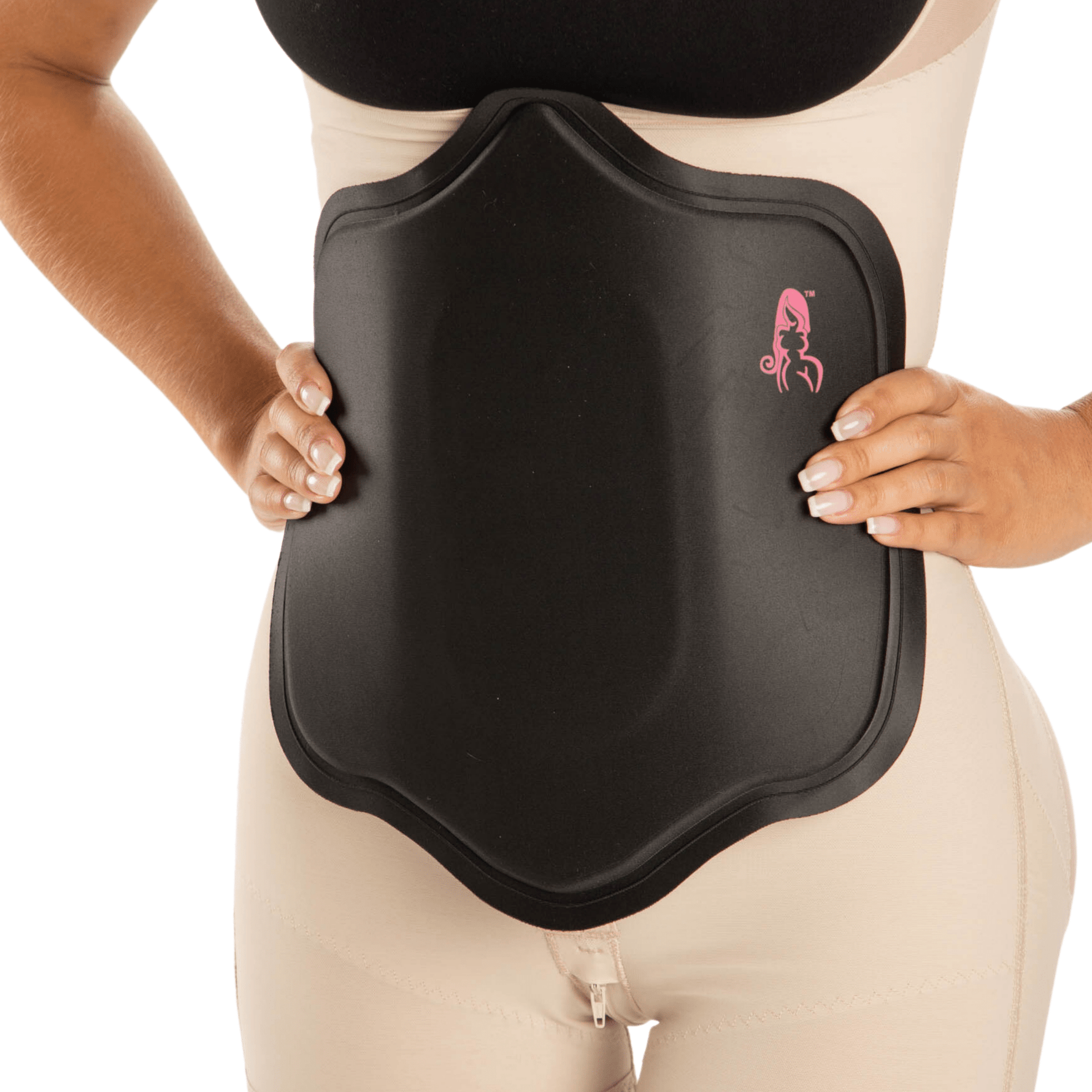
BBL Recovery Resources
Managing Pressure Points with Your Abdominal Compression Board
- #abdominal binder after surgery
- #arnica arnica
- #arnica gel
- #arnicare arnica
- #arnicare gel
- #bbl ass
- #bbl body
- #bbl butt pillow
- #bbl pillow atlanta
- #bbl pillow california
- #bbl pillow chicago
- #bbl pillow for sale near me
- #bbl pillow miami
- #bbl pillow near me
- #bbl pillows near me
- #bbl procedure
- #bbl recovery
- #bbl shorts
- #bbls
- #body shaper for men
- #body suit shapewear
- #bodysuit shapewear
- #boob binder
- #bra & body
- #bra binding
- #bra compressor
- #braazilian butt lift pillow
- #brachioplasty scar
- #brassiere compression
- #brazilian booty surgery
- #brazilian but lift
- #brazilian butt
- #brazilian butt lift
- #brazilian butt lift booty pillow
- #brazilian butt lift surgery
- #brazillian butt lift
- #breast binder
- #breast binding
- #breast reduction price
- #breast removal bras
- #but augmentation
- #butt shaped pillow
- #colombian faja
- #colombian fajas
- #columbia faja
- #columbian faja
- #compression bra
- #compression bras
- #compression clothing
- #compression fitness
- #compression garment
- #compression garments
- #compression garments for apron belly
- #compression suit for women
- #cost of reduction mammoplasty
- #curvy fajas
- #discount surgical
- #fahah waist trainer
- #fája
- #faja body shaper
- #faja meaning
- #faja postnatal
- #faja shapewear
- #faja waist trainer
- #fajas
- #fajas postnatal
- #fajas shapewear
- #fajas shapewear Group 2 (Keywords 51-100) how much does breast reduction cost
- #flexible back stretcher
- #garments garments
- #garments size chart
- #gelscar
- #girdle
- #girdle for men
- #girdle girdle
- #girdle male
- #girdle panty girdle
- #girdles
- #girdles and panty girdles
- #Group 1 (Keywords 1-50) fája
- #gurdle
- #how much does a boob reduction cost
- #how much does a breast reduction cost
- #how much does reduction mammoplasty cost
- #how much is a boob reduction
- #how much is breast reduction surgery
- #keloid silicone sheet
- #lipo recovery
- #liposculpture recovery
- #men in girdles
- #panty girdle
- #post surgery compression bra
- #postpartum shapewear
- #silicone gel sheets for hypertrophic scars
- #snatched body
- #snatched plastic surgery
- #snatched waist meaning
- #stage 2 faja
- #strap chin
- #surgical bra
- #the compression store
- #tummy control bodysui
- #tummy tuck compression garment
- #urine funnel for females
- #what is a bbl surgery
- #what is bbl
- #what is brazilian butt
- #what is brazilian butt lift
- #whats a mommy makeover
- #whats bbl
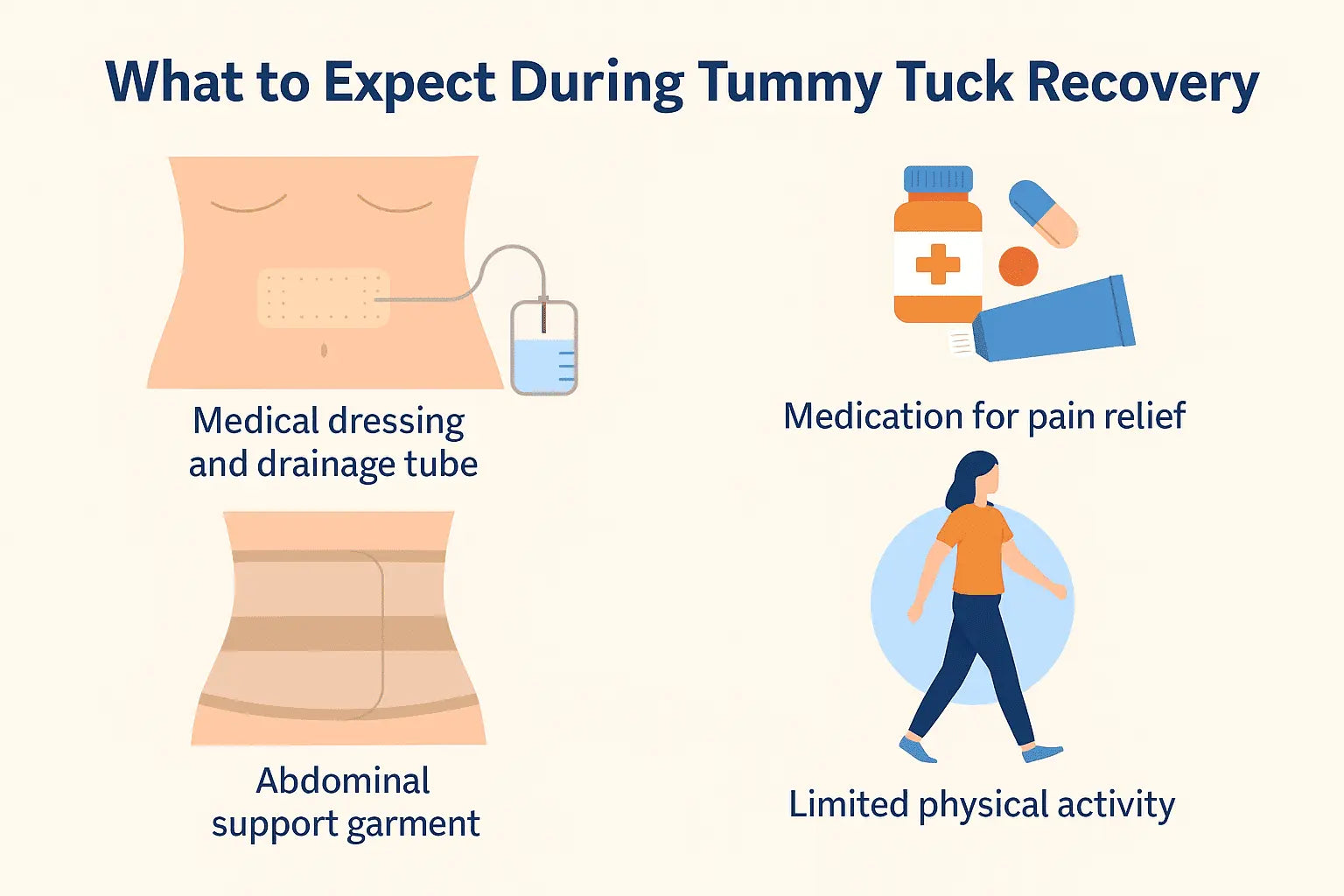
BBL Recovery Resources
Tummy Tuck Recovery: What to Expect
- #2025 best bbl pillow for plane
- #2025 best bbl pillow for travel
- #2025 best bbl pillow for work
- #ab recovery
- #abdominal binder near me
- #amazon bbl pillow for car
- #are bbl kits worth it
- #b b l
- #bandage foam
- #bbl
- #bbl before and after in clothes
- #bbl butt pillow
- #bbl cosmetic surgery
- #bbl driving pillow
- #bbl examples
- #bbl healing process
- #bbl kit
- #bbl pillow
- #bbl pillow driving
- #bbl pillow for car
- #bbl pillow for driving
- #bbl pillow kits
- #bbl pillow near me
- #bbl pillows
- #bbl pillows near me
- #bbl post surgery kit
- #bbl post surgery supplies
- #bbl procedure
- #bbl recovery kits
- #bbl reduction
- #bbl size
- #bbl supplies
- #bbl surgery pillow
- #best bbl pillow
- #best bbl pillow for car
- #best bbl pillow for driving
- #best bbl pillow for sitting
- #best butt wedge
- #best stage 2 compression garment after tummy tuck
- #best strapless bra for breast implants
- #big booty pillow
- #big butt pillow
- #body bandage wrap
- #body shaping company
- #bombshell booty pillow
- #bombshell booty pillow at miami
- #bombshell booty pillow near me
- #booty pillow
- #booty pillows
- #bra with sleeves
- #bras with molded cups
- #brazalian butt lift
- #brazilian bum lift surgery
- #brazilian but
- #brazilian butt life
- #brazilian butt lift aftercare
- #brazilian butt lift booty pillow
- #brazilian butt lift chair
- #brazilian butt lift pillow
- #brazilian butt lift recovery
- #brazilian buttock lift
- #brazilian buttock lift pillow
- #brazillian butt
- #breast bands
- #breast contour
- #breast reduction before and after clothes
- #breast reduction procedure
- #bum lift
- #bum lift surgery
- #bum operation
- #but lift
- #butt implantation
- #butt lift procedure
- #butt lift straps
- #butt pillow
- #butt pillow for plane
- #butt shaped pillow
- #butt wedge
- #buttock lift surgery
- #compression fabric
- #compression garment for mons pubis
- #compression underwear target
- #compression waist
- #corset girdle
- #define bbl
- #face bra
- #facelift after surgery
- #faja
- #fajas before and after
- #fajas for women
- #gynecomastia brassieres
- #how long does it take to recover from a bbl
- #how long is a bbl recovery
- #how long is bbl recovery
- #how long to wear compression bra after breast augmentation
- #how soon can i use silicone scar sheets after surgery
- #institute of beauty & wellness
- #ladies compression underwear
- #liposculpture recovery
- #liposuction wraps
- #mastectomy garments
- #mtf shapewear
- #my booty pillow miami
- #pillow butt
- #plastic surgery recovery
- #plump butts
- #post shoulder surgery bra
- #post surgical clothing
- #pressure garments
- #shaper for thighs
- #sports compression bra
- #stages of recovery after surgery
- #stages of swelling after tummy tuck
- #tabla abdominal
- #what a bbl
- #what are bbls
- #what is a bbl
- #what is a bbl plastic surgery
- #what is a brazilian but lift
- #what is a brazilian butt
- #what is a contour bra
- #what is bbl
- #what is brazilian butt lift
- #what os bbl
- #what us a bbl
- #what's a butt lift
- #whats a bbl
- #whats a mommy makeover
- #whats abbl
- #whats bbl surgery
- #why is it called a brazilian butt lift
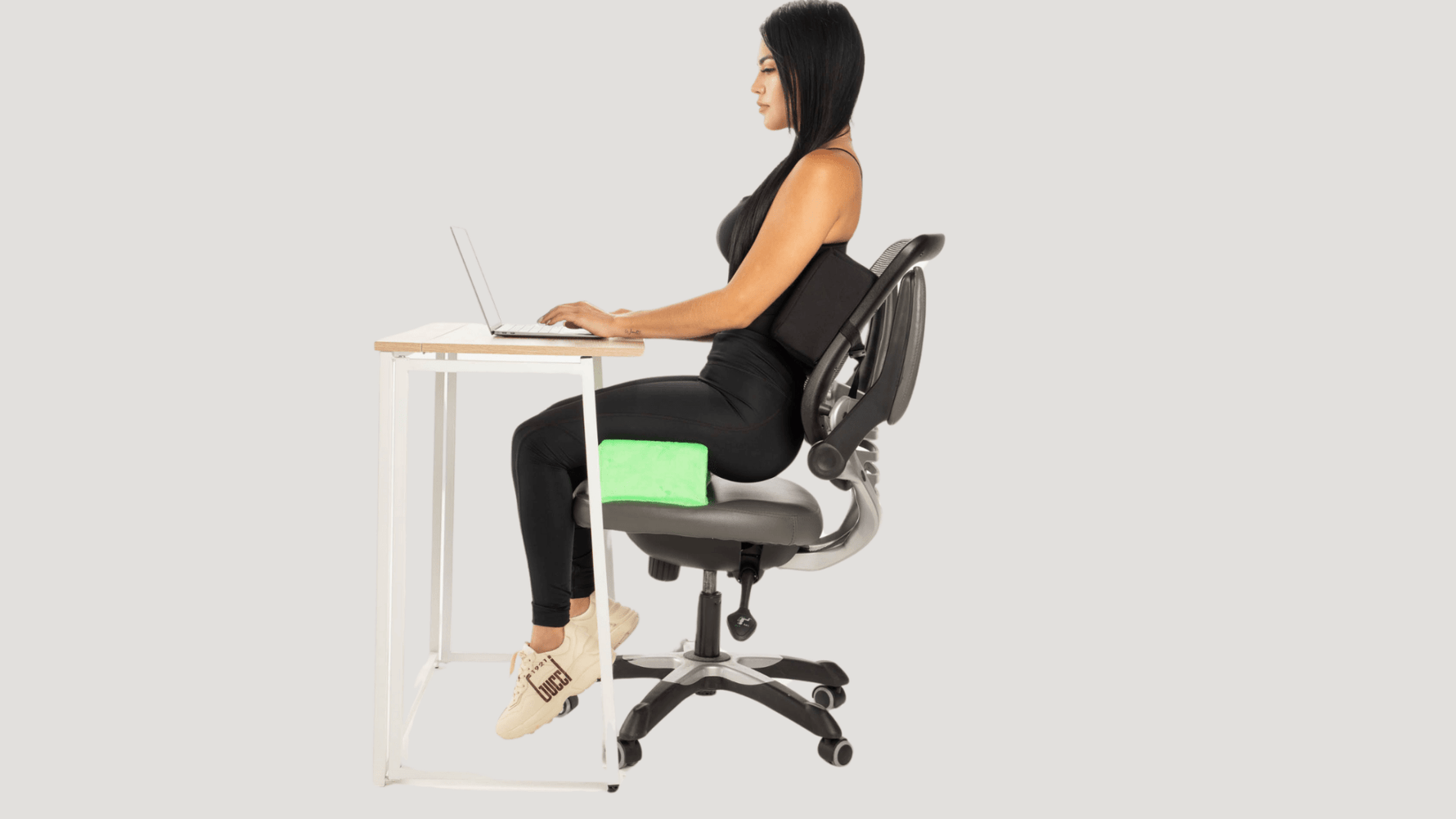
BBL Recovery Resources
- #"bbl Pillows" Blowout Sale
- #"bbl Pillows" clearance Sale
- #"bbl Pillows" Sale
- #6 weeks post op bbl
- #adjustable
- #after BBL How do you sit with a BBL pillow?
- #after BBL Where can I buy a BBL pillow?
- #after surgery
- #after surgery How long does BBL recovery take?
- #after surgery How painful is BBL recovery?
- #after surgery When can I sleep on my back after a BBL?
- #alternatives
- #ass cushion
- #bbl and tummy tuck sleeping ideas
- #BBL pillow
- #BBL pillow Atlanta
- #BBL pillow Austin
- #BBL pillow Beverly Hills
- #BBL pillow Boca Raton
- #BBL pillow Chicago
- #BBL pillow Dallas
- #bbl pillow for airplane
- #BBL pillow for driving
- #bbl pillow for plane
- #bbl pillow for sale
- #BBL pillow Fort Lauderdale
- #BBL pillow Houston
- #BBL pillow Jacksonville
- #BBL pillow Los Angeles
- #BBL pillow Miami
- #BBL pillow Naples
- #BBL pillow New York City
- #BBL pillow Newport Beach
- #BBL pillow Orlando
- #BBL pillow San Antonio
- #BBL pillow San Diego
- #BBL pillow San Francisco
- #BBL pillow Scottsdale
- #BBL pillow Tampa
- #BBL pillow West Palm Beach
- #BBL recovery
- #BBL recovery Atlanta
- #BBL recovery Austin
- #BBL recovery Beverly Hills
- #BBL recovery Boca Raton
- #BBL recovery Chicago
- #BBL recovery Dallas
- #BBL recovery Fort Lauderdale
- #BBL recovery Houston
- #BBL recovery Jacksonville
- #BBL recovery Los Angeles
- #BBL recovery Miami
- #BBL recovery Naples
- #BBL recovery New York City
- #BBL recovery Newport Beach
- #BBL recovery Orlando
- #BBL recovery San Antonio
- #BBL recovery San Diego
- #BBL recovery San Francisco
- #BBL recovery Scottsdale
- #BBL recovery Tampa
- #BBL recovery tips
- #BBL recovery West Palm Beach
- #BBL results
- #bbl seat
- #bbl sleeping ideas
- #benefits
- #best BBL pillow for driving
- #best brands
- #best chair cushion for butt pain
- #best orthopedic seat cushion for lower back pain
- #best rated seat cushion
- #best seat cushion for buttock pain
- #best seat cushion for desk chair
- #best seat cushion for office
- #best seat cushion for office chair
- #best sitting cushion
- #best way to sleep
- #big booty pillow
- #big butt pillow
- #Bombshell Booty Pillow
- #Bombshell Booty Pillow BBL cushion
- #Bombshell Booty Pillow Can I use a regular pillow for BBL recovery?
- #Bombshell Booty Pillow What are the best BBL pillow brands?
- #booty buddy
- #booty buddy bbl pillow
- #booty cushion
- #booty pillow
- #booty shaped pillow
- #bootylicious pillow
- #Brazilian butt lift aftercare Atlanta
- #Brazilian butt lift aftercare Austin
- #Brazilian butt lift aftercare Beverly Hills
- #Brazilian butt lift aftercare Boca Raton
- #Brazilian butt lift aftercare Chicago
- #Brazilian butt lift aftercare Dallas
- #Brazilian butt lift aftercare Fort Lauderdale
- #Brazilian butt lift aftercare Houston
- #Brazilian butt lift aftercare Jacksonville
- #Brazilian butt lift aftercare Los Angeles
- #Brazilian butt lift aftercare Miami
- #Brazilian butt lift aftercare Naples
- #Brazilian butt lift aftercare New York City
- #Brazilian butt lift aftercare Newport Beach
- #Brazilian butt lift aftercare Orlando
- #Brazilian butt lift aftercare San Antonio
- #Brazilian butt lift aftercare San Diego
- #Brazilian butt lift aftercare San Francisco
- #Brazilian butt lift aftercare Scottsdale
- #Brazilian butt lift aftercare Tampa
- #Brazilian butt lift aftercare West Palm Beach
- #Brazilian butt lift pillow
- #bum shaped pillow
- #butt cushion
- #butt pillow
- #butt shaped pillow
- #butt support pillow for butt pain
- #buttocks cushion
- #buttocks pillow
- #buy
- #can I sleep on my back 2 weeks after BBL
- #can i sleep on my back 4 weeks after bbl
- #car
- #care instructions
- #chair cushion for back pain
- #cleaning
- #comfort
- #complications
- #cushion for butt pain
- #cushion for buttock pain
- #cushion for sitting
- #cushion for sore bum
- #cushion for sore buttocks
- #desk chair pillow
- #discomfort What makes the Bombshell Booty Pillow different?
- #driving
- #driving after bbl
- #durable What is the warranty on the Bombshell Booty Pillow?
- #ergonomic chair cushion
- #ergonomic seat pad
- #fat transfer recovery How long to use a BBL pillow after surgery
- #features
- #gel seat cushion for office chair
- #guarantee
- #happy booty pillow
- #happy booty pillow wedge
- #healing process What are the side effects of a BBL?
- #how long
- #how long after a bbl can you sit
- #how long after bbl can i drive
- #how long after bbl can i sit without pillow
- #how long before you can sit after a bbl
- #how long can you sit on your bum after bbl
- #How long do I need to use a BBL pillow after surgery?
- #how long to use
- #how often
- #how to clean a BBL pillow
- #how to drive after bbl
- #how to lay after bbl
- #how to sit
- #how to sit after bbl
- #how to sit after buttock augmentation
- #how to sit with a BBL pillow in a car
- #how to sleep after bbl
- #how to sleep after bbl and lipo
- #how to sleep after bbl and tummy tuck
- #hygiene When can I sit normally after a BBL?
- #i sat after my bbl
- #instructions Can I drive with a BBL pillow?
- #material
- #memory foam chair pad
- #my dr said i can sit after bbl
- #not recommended How often should I take breaks from sitting with a BBL pillow?
- #not using
- #office chair seat booster
- #orthopedic chair cushion
- #pain
- #patented Is the Bombshell Booty Pillow adjustable?
- #pillow for buttock pain
- #pillow shaped like a butt
- #pillows for sore buttocks
- #post-BBL care
- #post-surgery pillow
- #pressure relief pillow for buttocks
- #proper use
- #purchase
- #purpose
- #quality
- #recommended
- #recovery
- #recovery pillow
- #recovery tips What happens if I don't use a BBL pillow?
- #recovery What is a BBL pillow used for?
- #regular pillow
- #results How do I clean my BBL pillow?
- #return policy BBL pillow
- #risks
- #sciatica cushion for office chair
- #seat cushion for buttock pain
- #seat cushions office
- #side effects
- #sit pillow
- #sitting
- #sitting after BBL
- #sitting after bbl myth
- #sitting after surgery
- #sitting breaks
- #sitting on bbl after 2 weeks
- #sleeping on back
- #sleeping positions
- #sleeping positions When can I drive after a BBL?
- #substitutes
- #support pillow
- #support What is the Bombshell Booty Pillow made of?
- #timeline
- #travel
- #unique
- #use
- #warranty
- #what happens if you sit on your butt after a BBL
- #when can i drive after bbl
- #when can I drive What are the best sleeping positions after a BBL?
- #when can i lay on my back after bbl
- #when can I sit
- #when can i sit after bbl
- #when can I sit normally after a BBL surgery
- #when can i sit on my butt after a bbl
- #when can i sit on my buttocks after bbl
- #when can i sleep on my back after bbl
- #when can you sit on toilet after bbl
- #where to buy a BBL pillow
- #where to get
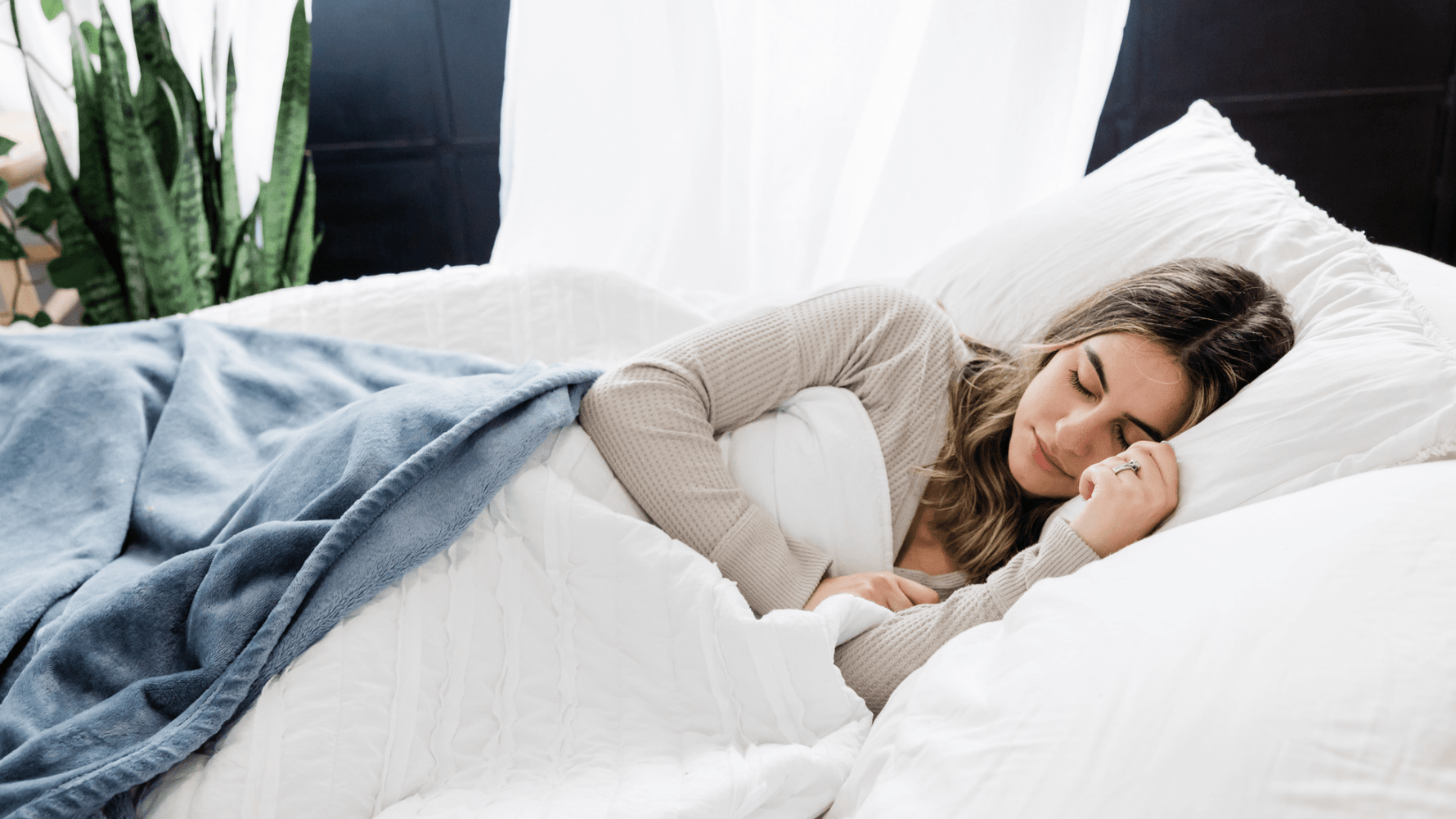
BBL Recovery Resources
- ##1 best bbl pillow dr approved
- ##1 best bbl pillow patented dr approved
- #10 years after liposuction
- #11 weeks post op bbl
- #2023 BEST BBL PILLOW
- #2023 PLASTIC SURGERY TRENDS
- #2024 bbl list of needs
- #2024 best bbl cushion for sitting
- #2024 best bbl pillow bombshell booty pillow
- #2024 best bbl pillow for car
- #2024 best bbl pillow for driving
- #2024 best bbl pillow for plane
- #2024 best bbl pillow my booty pillow
- #2024 best bbl post surgery supplies
- #after bbl pillow
- #after surgery bbl pillow
- #amazon bbl pillow
- #amazon bbl pillow for car
- #aossa bbl pillow
- #avocado bbl pillow
- #bbl cushion
- #bbl cushion atlanta
- #bbl cushion miami
- #bbl cushion new york
- #bbl cushion north carolina
- #bbl cushion ny
- #bbl cushion pillow
- #bbl cushion seat
- #bbl cushion texas
- #bbl pillow
- #bbl pillow after surgery
- #bbl pillow after surgery booty cushion
- #bbl pillow after surgery for booty
- #bbl pillow after surgery for butt
- #bbl pillow airplane
- #bbl pillow alternative
- #bbl pillow amazon
- #bbl pillow australia
- #bbl pillow austria
- #bbl pillow aventura miami
- #bbl pillow bed
- #Bbl pillow benefits
- #bbl pillow bundle
- #bbl pillow bundle package
- #bbl pillow california
- #bbl pillow canada
- #bbl pillow cheap
- #BBL PILLOW COMBO
- #BBL PILLOW COMPLETE PACKAGE
- #bbl pillow donut
- #bbl pillow driving
- #bbl pillow Florida aventura Miami
- #bbl pillow for airplane
- #bbl pillow for bed
- #bbl pillow for car
- #bbl pillow for driving
- #bbl pillow for plane
- #bbl pillow for sale
- #bbl pillow for sale near me
- #bbl pillow for sitting
- #bbl pillow for sleep
- #bbl pillow for sleeping
- #bbl pillow for sleeping 360 lipo foam fajas postparto colombianas bbl pillow amazon bbl sleeping pillow lipo foam boards best bbl pillow for sleeping fajas colombianas originales cerca de mi lipo foam pads best bbl pillow for driving bbl pillow near me bb
- #BBL PILLOW FOR THE PLANE
- #BBL PILLOW FOR TRANSGENDER
- #bbl pillow for traveling
- #BBL PILLOW FOR WORK
- #bbl pillow illionis
- #bbl pillow kit
- #BBL pillow Lakeland
- #bbl pillow lakelnad florida
- #bbl pillow las vegas
- #bbl pillow manufacturer
- #bbl pillow manufacturers
- #bbl pillow manufacturers in the usa
- #bbl pillow mexico
- #bbl pillow miami
- #bbl pillow Miami Florida
- #BBL PILLOW NEAR ME
- #bbl pillow nearby
- #bbl pillow new jersey
- #bbl pillow nj
- #bbl pillow ny
- #BBL Pillow Orlando
- #BBL PILLOW PACKAGE COMBO
- #bbl pillow pink
- #bbl pillow reviews
- #bbl pillow supplies beverly hills
- #bbl pillow supplies california
- #bbl pillow supplies houston
- #bbl pillow supplies lakeland
- #bbl pillow supplies miami
- #bbl pillow supplies michigan
- #bbl pillow supplies new york
- #bbl pillow supplies north carolina
- #bbl pillow supplies ny
- #bbl pillow supplies orlando
- #bbl pillow supplies san diego
- #bbl pillow supplies texas
- #bbl pillow supplies tijuana
- #bbl pillow texas
- #bbl pillow to sleep
- #bbl pillow to sleep on back
- #bbl pillow to travel
- #bbl pillow turkey
- #bbl pillow walmart
- #bbl pillow wholesale
- #bbl pillow wholesale miami
- #bbl pillow with back support
- #BBL Pillow | Brazilian Butt Lift Pillow Post Surgery Recovery
- #BBL Pillows
- #bbl pillows amazon
- #bbl pillows miami
- #bbl pillows near me
- #bbl pillows new york
- #bbl pillows nj
- #bbl pillows ny
- #bbl pillows texas
- #bbl pillows to sleep
- #bbl recovery bbl pillow
- #bbl sleep pillow
- #bbl sleep position
- #bbl sleeping hacks
- #bbl sleeping pillow
- #bbl sleeping pillow amazon
- #best bbl cushion
- #best bbl pillow
- #best bbl pillow 2024
- #best bbl pillow 2024 bombshell booty pillow
- #best bbl pillow 2024 my booty pillow
- #best bbl pillow bombshell booty pillow
- #best bbl pillow for plane
- #best bbl pillow for sleeping
- #BUTT CUSHION
- #butt shaped pillow
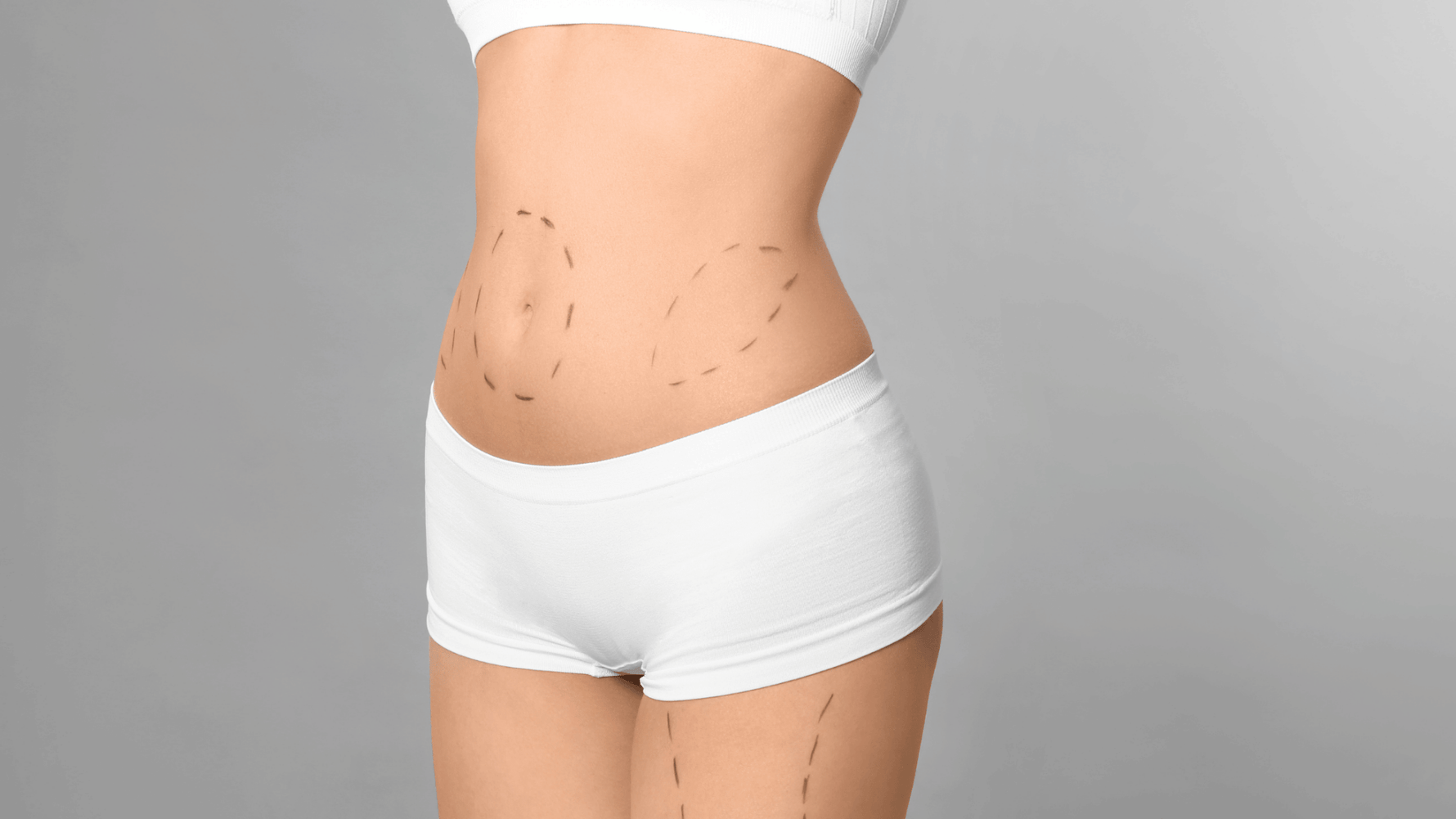
BBL Recovery Resources
Exploring Skinny BBL, Natural BBL, and BBL Reversal
- ##1 doctor patented approved bbl pillow
- #10 years after liposuction
- #11 weeks post op bbl
- #2024 best bbl pillow for car
- #2024 best bbl pillow for driving
- #2024 best bbl pillow for plane
- #2024 best bbl pillow my booty pillow
- #2024 best bbl post surgery supplies
- #2024 best bbl post up supplies list
- #2024 best bbl surgeons miami
- #2024 cosmetic surgery trends
- #2024 plastic surgery trends
- #305 cosmetic surgery
- #305 plastic surgery
- #abdominal compression board
- #affordable bbl surgery in miami
- #affordable bbl surgery miami
- #affordable bbl surgery pillow
- #after a bbl when can i sit
- #amazon bbl pillow for car
- #arnica
- #arnica gel side effects
- #arnica tea
- #arnica tea benefits
- #atlanta BBL surgery
- #BBL BRAZILIAN BUTT LIFT PILLOW
- #bbl fitness
- #bbl gone wrong 2023
- #bbl gone wrong 2024
- #bbl massage near me
- #bbl massages
- #bbl natural
- #bbl natural texas
- #bbl pillow for airplane
- #bbl pillow for car
- #bbl pillow for driving
- #BBL Pillow | Brazilian Butt Lift Pillow Post Surgery Recovery
- #bbl recovery pillow
- #bbl recovery timeline
- #bbl reversal
- #bbl reversal before and after
- #bbl reversal before and after kardashians
- #bbl reversal california
- #bbl reversal florida
- #bbl reversal kylie
- #bbl reversal miami
- #BBL REVERSAL NEAR ME
- #bbl reversal new york
- #bbl reversal ny
- #bbl reverse
- #bbl reversed
- #bbl reversed before and after images
- #bbl reversed before and after pictures
- #bbl reversed plastic surgeon
- #bbl seat cushion
- #bbl seat pillow
- #bbl shapewear
- #BBL SHAPEWEAR GARMENT
- #bbl sleep pillow
- #bbl surgery
- #BBL surgery Arizona
- #BBL surgery atlanta
- #bbl surgery Australia
- #bbl surgery beverly hills california
- #bbl tijuana
- #best brazilian butt lift pillow
- #best brazilian butt lift pillow bbl
- #best bbl pillow for car
- #best bbl pillow for driving
- #best bbl recovery pillow
- #best bbl seat cushion
- #best female urinal device
- #best female urinary device
- #best waist trainer for women
- #big butt bbl pillow
- #big butt pillow
- #booty shaped pillow
- #brazilian butt lift natural
- #brazilian butt lift pillow
- #brazilian butt lift pillow bbl
- #brazilian butt lift pillow near me
- #brazilian butt lift pillow to travel
- #brazilian butt lift pillow united kingdom
- #brazilian butt lift trend
- #brazilian butt lift trends
- #brazilian butt lift trends 2024
- #butt shaped pillow
- #Buttock Pillow Bbl Recovery Pillow After surgery
- #cali curves fajas fajas y fajas stage 2 faja bbl stage 1 faja cali curves colombian fajas
- #chupa panza
- #colombian fajas
- #dr curves atlanta deaths
- #faha clothing
- #female urinal device
- #how to fix dents after bbl
- #how to sit on bbl pillow
- #kim k bbl reversal
- #kim k bbl reverse
- #kim k bbl reversed
- #kim kardashian bbl reversal
- #kim kardashian bbl reverse
- #kim kardashian bbl reversed
- #kylie bbl reversal
- #kylie bbl reversed
- #kylie jenner bbl reversal
- #kylie jenner bbl reversed
- #kylie reverse bbl
- #lift pillow
- #lipo foam
- #lipo foam and board
- #lipo massages near me
- #liposuction foam pads
- #lymphatic drainage massage atlanta
- #lymphatic drainage massage california
- #lymphatic drainage massage cincinnati
- #lymphatic drainage massage georgia
- #lymphatic drainage massage las vegas
- #lymphatic drainage massage miami
- #mobile lymphatic drainage massage near me
- #natural bbl california
- #natural bbl colombia
- #natural bbl florida
- #natural bbl houston
- #natural bbl miami
- #natural bbl new jersey
- #natural bbl new york
- #natural bbl nj
- #natural bbl ny
- #natural bbl texas
- #new life plastic surgery
- #new life plastic surgery miami
- #pillow for driving
- #prestige plastic surgery miami deaths
- #skinny bbl atlanta
- #skinny bbl florida
- #skinny bbl georgia
- #skinny bbl miami
- #skinny bbl north carolina
- #snatched waist
- #spectrum aesthetics
- #waist trainers for women
- #what are fajas
- #what is a faha
- #what is a faja
- #when can i drive after a bbl
